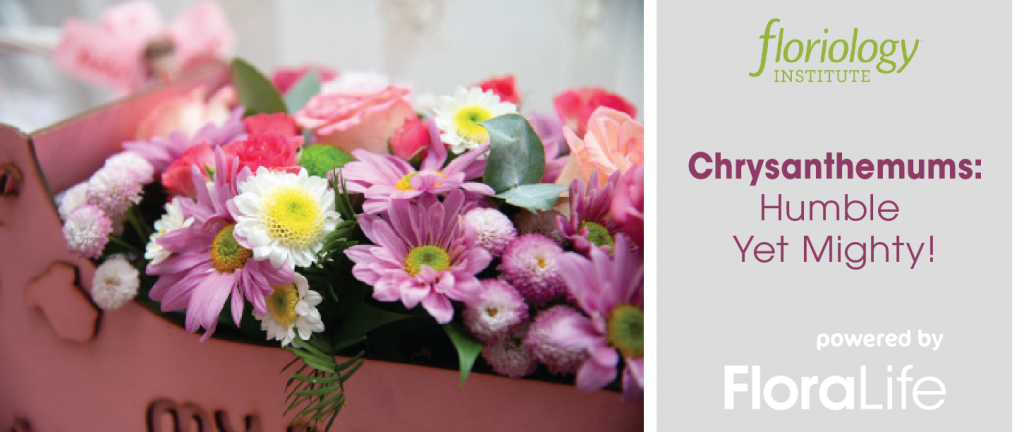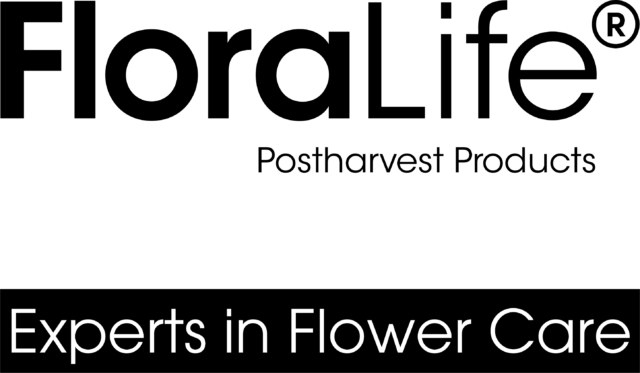Chrysanthemums (Pompons): Humble yet mighty!
Floriology Institute November 2021, powered by FloraLife

Native to Asia, and northeastern Europe, Pompons belong to one of the biggest plant families, Asteraceae. Cultivated in Japan as early as the 8th century, many flower forms and colors have been developed there. In fact, chrysanthemum flowers feature heavily in Japanese culture.
Native, or wild forms of chrysanthemum flowers are much simpler than their cultivated siblings, with smaller daisy-like flowers or more decorative blooms, resembling buttons or pompons, hence their common name.
Their natural form is to develop as a multi-branched ‘Spray’ stem, and traditionally, to grow a single large headed stem required careful cultivation and pruning. Nowadays, many cultivars have been developed to lessen or eliminate the need for special cultivation techniques to grow single headed stems.
In addition to large single headed varieties, breeders have been working on increasing the colour range, and developing new flower forms to attract a new audience of consumers. Which is encouraging, as these flowers truly are the workhorse of the floral industry. So versatile, long lasting, and relatively sturdy when properly handled, they really do give value for money and are beautiful to boot!
Purchasing
- Choose stems with heads showing full color, and ¾ to fully open.
Shipping & Storage
- Shipping and storage temperatures should be 34 – 38° F / 1 – 3° C
- Dry storage is best, but only if temperatures are maintained between 34 – 38° F / 1 – 3° C
Re-hydration at Store Level & Storage
- Store flowers dry at 34 – 38° F / 1 – 3° C for as long as possible (until flowers are needed for wet case display at store/wholesale level)
- Start processing with a clean bucket, sanitized with FloraLife® D.C.D.® cleaner.
- If received dry packed, conditioning of stem ends is recommended to prevent blockage and promote uptake. Cut approximately 1” / 3cm more off stems. Use clean, sanitized clippers or knife, and treat with FloraLife® Quick Dip.
- Place flowers in a holding treatment such as FloraLife® Express 200. Do not put flowers directly in metal/galvanized buckets. Use clean, high quality water that has not been treated with a water softener as the salt levels can be damaging to flowers.
- Store in a cooler at 34 – 38° F / 1 – 3° C, relative humidity of 75 – 85%
- Allow minimum 2 hours to hydrate placing buckets in an area with good airflow.
- Always remember FIFO (first in/first out) when rotating Pompons or any other flowers.
Vase Care
- Remove any leaves that might be below the vase solution.
- If flowers are dry packed, cut approximately 1” / 3cm or more off stems. Use clean, sanitized clippers or knife, and treat with FloraLife® Quick Dip.
- Immediately place flowers in vase solutions containing FloraLife Crystal Clear® or FloraLife® Express 300.
Common Defects:
- Botrytis can develop in bloom. Always maintain the correct temperature and humidity levels during storage. Use anti-Pathogen Transport Paper sheets during shipping and storage.
- Flowers shattering due to rough handling.
- Foliage yellowing.
- Foliage browning.
- Dehydration.
Read the full article on: www.floriologyinstitute.com
To learn about best practices from the experts in flower care or to inquire about products and availability in your region, visit www.floralife.com or contact your local FloraLife representative.
*Product availability depends upon geographical region.
